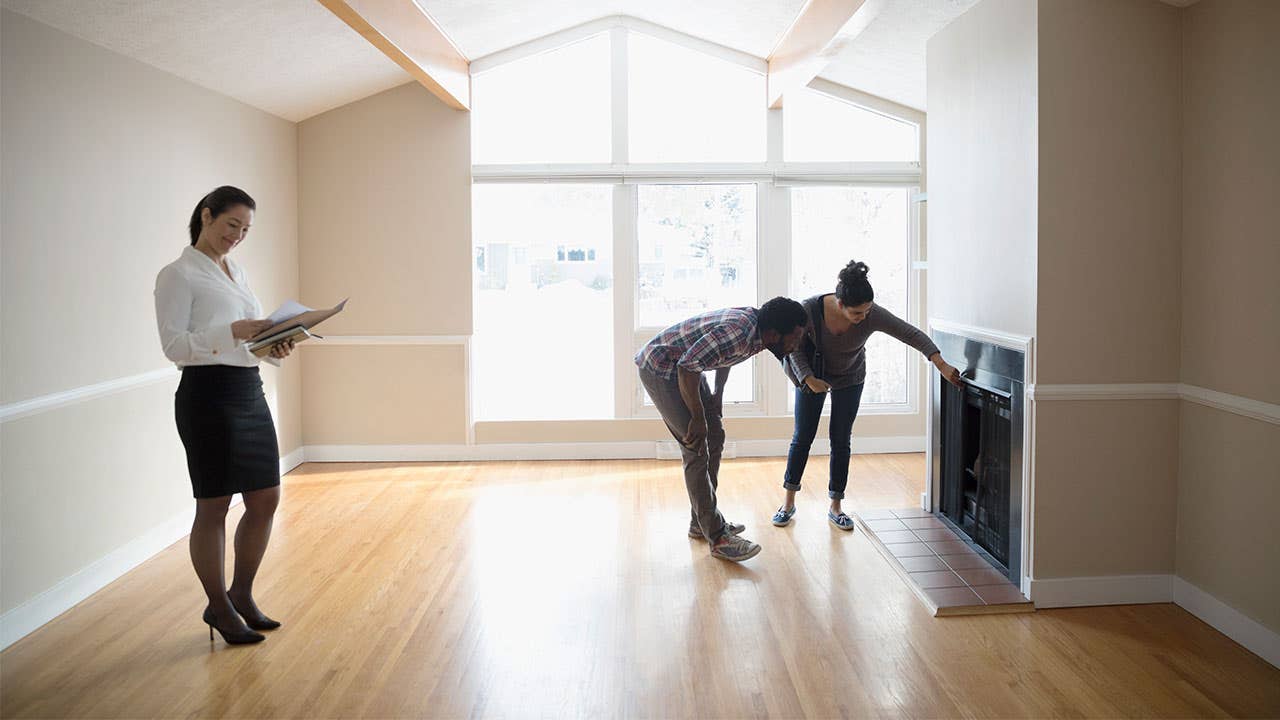The final walk-through: Top tips for homebuyers




Key takeaways
- The final walk-through lets homebuyers verify, before closing, that the property is in the contractually agreed-upon condition.
- It is typically scheduled for the day before or day of the closing.
- If any issues are found, it’s important to communicate them to the seller right away to find a resolution, or the closing may be delayed.
Buying a home can come with an intense sense of pressure, especially in expensive areas or markets where competition is fierce. It’s tempting to rush through the process in an attempt to beat the clock — or beat out your fellow house-hunters. But there is one essential step no one should skip before closing, no matter how much pressure they’re under: the final walk-through.
“You want to make sure the home is in the same condition as when the offer was made,” says Andy Peters, a real estate broker and founder of the Peters Team in the Atlanta area. “If a seller is doing negotiated repairs or improvements, you want to verify that they were, in fact, done — and done correctly.”
The final walk-through means you’re almost at the finish line, and it’s your last chance to make sure everything in the home is as you expected. Here’s what you need to know.
Walk-through vs. home inspection
First things first: As you gear up for the final walk-through, it’s important to remember that this is not another official home inspection, and there is no fee involved. Instead, it’s an opportunity to verify that any issues that turned up during the inspection — which likely occurred just a few days after you signed the initial contract — have now been addressed.
Your real estate agent will likely attend, and should bring along documentation to help confirm that all is as it should be. This includes the inspection report, the seller’s disclosure form and any repair amendments you and the seller agreed on. Your agent should request receipts for any repairs the seller completed after the home inspection, too, and have those on hand during the final walk-through.
Final walk-through checklist: What to look for
During the final walk-through, there are a variety of things you should keep an eye out for. Use this checklist to make sure all your bases are covered:
- Any repairs the seller promised should be completed and satisfactory.
- Ensure that the seller’s belongings have been fully moved out (double check closets and storage spaces).
- Real estate fixtures, like appliances, that are included in the purchase agreement should be in good working order. The seller should also have left manuals and instructions for appliances and major systems.
- Door and window locks should be fully functioning.
- Make sure the heat and air conditioning systems are working.
- Similarly, make sure all faucets are working, toilets flush properly and there are no plumbing leaks.
- Test light switches, exhaust fans and ceiling fans as well. Don’t forget the electrical outlets — consider bringing a phone charger or small device that can be quickly plugged in to test each outlet.
- Walls, ceilings and doorways should be structurally intact, with no damage from the seller’s move out.
- The yard should be free of any debris or damage.
- Check that the seller left the garage door openers and keys in the home or with their real estate agent.
- Walk around the home to check for new damage or cosmetic issues that weren’t previously there.
Schedule your final walk-through just before the closing
In most cases, the final walk-through is scheduled within 24 hours prior to the closing date. Your real estate agent can help you set a time with the seller’s agent when you can be sure the property will be accessible and (hopefully) vacant.
“Ideally, the final walk-through will take place on the way to the closing office or the evening before,” says Alyse Alonso, an agent with eXp Realty in San Antonio, Texas. “I have seen them take place a day or two before closing in certain circumstances.”
In-between the final walk-through and the closing, keep in touch with your real estate agent. If you found any issues during the walk-through, they will communicate with the seller’s agent to address those problems. If all went smoothly, your agent will let you know when you’re cleared to close.
Can a seller deny a final walk-through?
A seller cannot legally deny a buyer the opportunity for a final walk-through before closing. This is a standard part of the home-sale process. But it couldn’t hurt to include it in your contract just in case.
If a disaster or storm hits before you close
It’s unlikely, but let’s say you completed your final walk-through on a Thursday afternoon. Then, a major storm with severe winds moves through the area on Thursday evening, before your closing on Friday morning. You may want to reexamine the property in a second, post-storm walk-through in a case like this, to make sure there is no damage that will end up on your to-do — and to-pay-for — list.
Serious issues could even affect your loan status. “In some cases, the bank may not complete the loan until the damage is remedied,” Alonso says. However, she points out that “the buyer and seller may be able to negotiate suitable repairs.”
Communicate any issues you find ASAP
Finding a significant problem during the final walk-through can be a hassle. In extreme cases, home sales can be completely derailed at this stage.
“Water intrusion, damage from fallen trees and sinkholes are all things we’ve discovered at final walk-throughs,” Peters says.
If something does come up, though, it’s not necessarily a deal-breaker. It may simply delay the closing by a few days to resolve the problem, or you might ask the seller to provide you with a credit at closing so you can handle the repairs after moving in.
“Most issues can be worked out by negotiating more money,” Peters says. “If the home is not in the condition it was when you made the offer, the seller has to cure the issue if they want to sell.”
“I always advise the buyer to review the situation carefully and figure out whether or not it’s worth delaying the closing,” says Jason Gelios, a Realtor with Community Choice Realty in Southeast Michigan. “However, larger issues like missing appliances or major damage to the property should never be overlooked. Most sellers are open to making things right at this stage of the process.”
Can I back out after the final walk-through?
Whether or not you can terminate your real estate contract after the final walkthrough depends on the terms of your contract.
“In most cases, it would be hard to terminate the purchase agreement as a result of the final walk-through, unless you could point to a major change in the condition of the property,” says Detroit real estate attorney Lisa Okasinski of Okasinski Law PLC. “For smaller items of damage that happened after the purchase agreement was entered, it’s more realistic that the parties would agree to have the buyer withhold from the seller an amount necessary to make the repairs at closing.”
Legally, you are permitted to back out if the property does not meet the obligations detailed in your contract, says Elizabeth Grimes, a real estate attorney with Ligris + Associates in Newton, Massachusetts. However, “typically, sellers and buyers instead agree to either monetary compensation or other solutions to ensure the transaction moves forward,” she says.
FAQs
Why we ask for feedback Your feedback helps us improve our content and services. It takes less than a minute to complete.
Your responses are anonymous and will only be used for improving our website.
You may also like

Offerpad review: What it is and how it works

Buying a foreclosed home: A step-by-step guide

8 things to do immediately after buying a house


